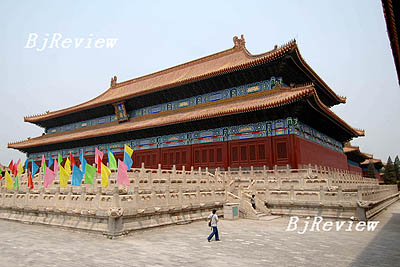|

The Imperial Ancestral Temple, lying to the east of the imperial palace, the Forbidden City, is where Chinese emperors stored their ancestors' tablets and worshipped them during festivals and ceremonies.
This ancient tradition of imperial ancestral temples is an example of how important ancestor worship once was in Chinese culture. The Imperial Ancestral Temple enjoyed a high status in the state. Different from the ancestral temples of commoners' families, the Imperial Ancestral Temple has been divided into different halls of worship, each housing one late emperor.
In ancient China, an emperor's daily life was closely related to the ancestral temple. On occasions of ascending the throne, getting married, having sons, going to the battlefield and a triumphant return from battle, the emperor would first come here to offer sacrifices to his ancestors. They believed in informing their ancestors of the major decisions they were about to make and requesting their blessings for everlasting prosperity of the imperial family.
The emperors of the Ming (1368-1644) and the Qing (1644-1911) dynasties used the Imperial Ancestral Temple to the left of the Forbidden City for nearly 600 years.
Beijing's Imperial Ancestral Temple was first built in 1420 and was later renovated many times. A renovation project completed last year was the largest one in recent decades. The existing layout is mainly the product of a reconstruction of the building in 1545, which converted it into one complete building compound during the Ming Dynasty. The building has high artistic and historical value and can be used as textbook for studying the architectural arrangement of China's ancient building compounds.
The Forbidden City follows the traditional architectural layout for capital cities, with the Altar of Land and Grain where emperors worshipped gods on its right side and the Imperial Ancestral Temple on its left side.
The temple compound consists of three imposing buildings. The front building, as the major worship hall, hosted the majority of important worship ceremonies. Nine-meter-high walls surround the square compound. There are three gates on the western wall, which made it possible for emperors to walk into the temple without leaving their palace.
When China's last emperor stepped down in 1912, the temple's function became irrelevant. In 1924, it became a park called Peace Park.
After being closed for decades, the park was reopened after the founding of the People's Republic of China in 1949. | 